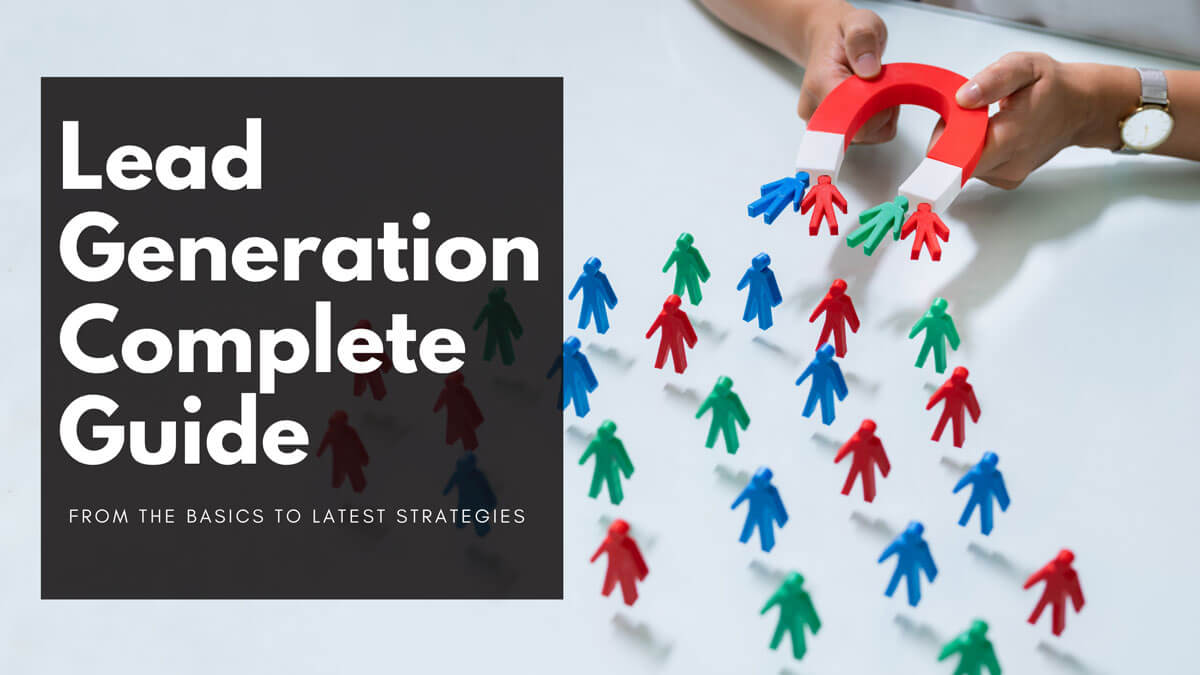Introduction – Lead Generation Complete Guide: From Basic To 5 Powerful Strategies
In the digital age, lead generation has become increasingly important.
Whether you are a business looking to generate leads for your products and services or an individual trying to make connections in their professional life, lead generation is something that should be on your mind.
In this blog post, we will talk about what lead generation is and how it can help you achieve success in any facet of your business life.
We will discuss what a lead is and why it’s so important to generate them as well as different strategies for generating leads from various sectors including startups, small businesses, corporations, real estate agents, service businesses, etc.
The lead generation process has evolved in recent years, and there are a number of digital marketing strategies that you can take advantage of.
Lead generation is the act of acquiring contact information from potential clients to use for direct marketing purposes.
It’s important to have an efficient strategy in place so that you can nurture leads and convert them into customers.
Download Our Free E-Book
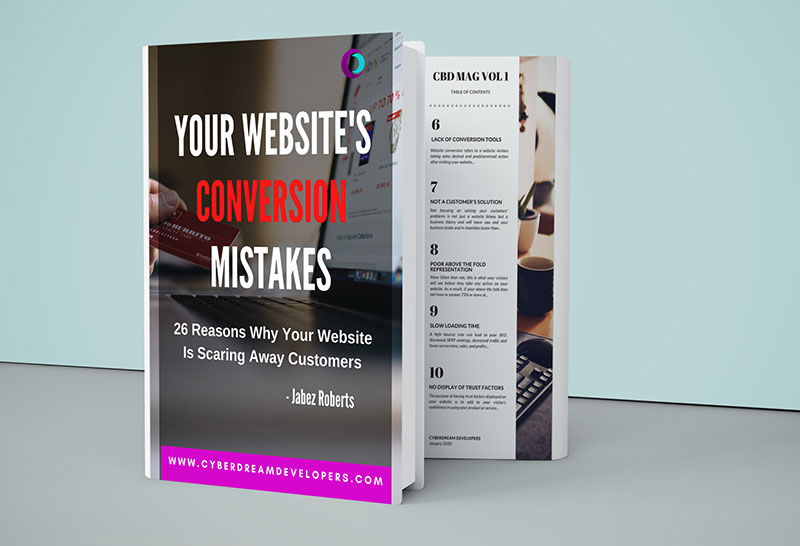
What Are Leads?
A lead is the potential customer’s contact information which can be collected through various marketing methods. This includes their email address, phone number, or social media account.
What Is Lead Generation?
Lead generation refers to promotional strategies wherein a business acquires leads and fills in their database with these contacts so that they will stay updated on new products or services coming out from the said company.
It does not include other online advertising efforts such as pay-per-click (PPC) campaigns, search engine optimization (SEO), content management system promotion (CMS), etcetera.
What Are The Types Of Lead Generation?
There are two types of lead generation: offline and online lead generation.
Offline Lead Generation
Offline Lead Generation generates more leads because it has higher conversion rates compared to its counterpart but this requires the company to have a considerable amount of budget.
A lead is generated when they call the sales team, go into their stores or request for more information via mail or email.
Online Lead Generation
Due to its cheaper price and higher ROI, online lead generation is becoming popular nowadays especially among startups due to budget constraints- which means that with less capital available it generates high quality leads in bulk quantity at minimal cost.
It’s important for these businesses though to know how long it takes before clicking on an ad becomes considered as a “lead” so there will be no confusion about what type of conversion rate they’re talking tracking ad success against.
Conversion rates here refer only to clicks- not signups (including form submissions) and other actions like shares from social media.
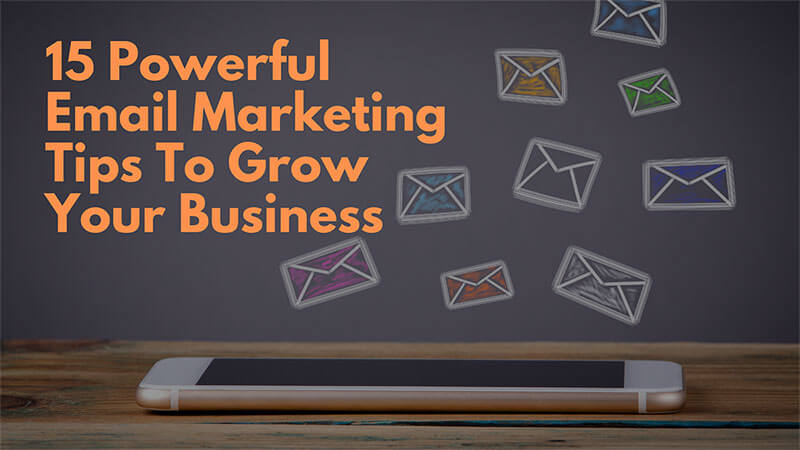
What Is A Lead In Digital Marketing?
A “lead” refers to someone who has expressed interest in your company’s products or services.
A lead in digital marketing is someone who can be a potential customer or client but they are not yet at the stage of the buyer’s journey where they are ready to make a purchase or do business with you.
A consistent and reliable supply of sales and new customers is the lifeblood of every business no matter the size, age, or industry.
Without consistent and reliable sales and new customers coming into the business, the business will eventually run into financial troubles and may have to close.
The solution to this problem starts with consistently generating new sales and clients coming into your business and lead generation is the answer to that problem.
Understanding The Basics Of Online Lead Generation
Lead generation is a process for generating leads from website traffic, social media, mobile apps, and other sources.
It helps match your business with qualified prospects who may be interested in what you have to offer.
In online marketing, lead generation is the process of finding and capturing information from potential customers in order to deliver an offer that satisfies their needs.
Lead generation can be accomplished through a variety of methods such as email campaigns, search engine optimization (SEO), social media advertising, blog posts & content marketing, display ads in web browsers or other digital markets like iTunes or Google Play.
It’s important to have specific goals for your lead generation campaign before moving forward with it so you know what exactly your efforts are producing.
Having measurable objectives allows you to track whether those leads turned into sales and how many new clients resulted after following up with them through some additional means like an email marketing nurture campaign.
It also gives you an understanding of key marketing metrics that can affect the profitability of your campaigns.
Some of these key metrics include:
- Cost Per Click (CPC) – The average price paid to achieve one click on your listing
- Cost Per Lead (CPL) – The average price paid to convert a click into a lead. For example; it might take you two clicks on average to generate one lead
- Cost Per Acquisition (CPA) – The average price paid to convert one lead into a paying customer or client
- Cost Per Thousand Impressions (CPM) – The average price paid to achieve 1,000 impressions on your Pay Per Click (PPC) campaign. An impression in digital marketing is simply the number of times your ad is shown to someone
- Return On Investment (ROI) – The amount of money you earn from investing a dollar into a marketing campaign. If your ROI is negative or zero then the marketing campaign, under most conditions but not all, is considered a failure. It is not considered failure under these conditions fi your objective was not to drive sales.
The value of your lead will depend on your ability to convert it in a quick and cost-effective way.
Don’t worry!
We have a guide to help you with some of the most effective and latest digital marketing strategies to convert leads into customers.
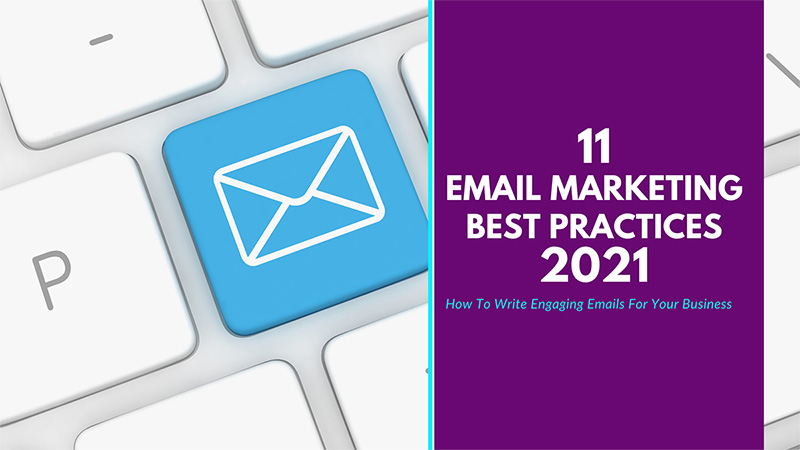
Before we go any further we must take a look at the concept of a buyer’s journey.
Once we understand what a buyer’s journey is we will also have a better understanding of what it takes to get a lead from any marketing campaign, paid or organic, online or offline, that we will run.
Additionally, we will also learn how to communicate our leads to improve our conversions from our marketing campaigns.
We will also be able to improve each of our marketing strategies to get the best results.
When we sell we must always ensure that we speak the language of the buyer. That means we must also know who our ideal client is and be able to communicate with them.
We will also look at a simple 16-step strategy to learn more about who our ideal client is so that we can be better able to communicate with them.
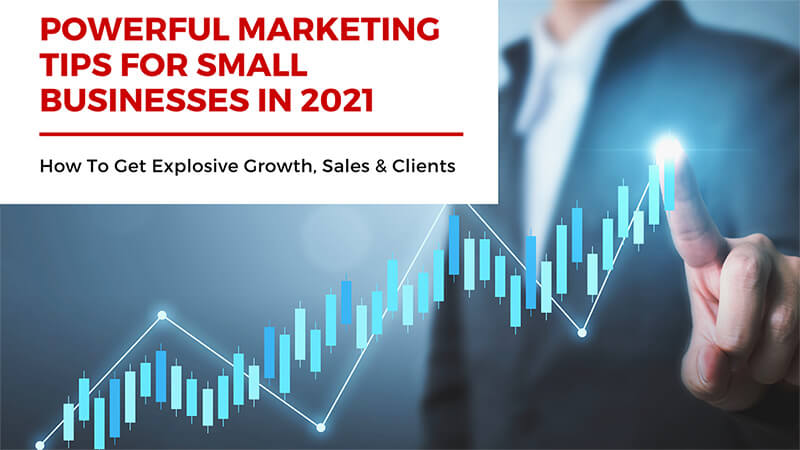
What Is A Buyer’s Journey In Online Marketing?
A buyer’s journey is the process in which a customer goes from being totally unaware of your product or service to considering it, and finally deciding whether they want to purchase.
Identifying where your customers are on their individual journey at any given time can help you tailor your marketing content for different phases along that path.
An understanding of what phase people are in will also give you some insight into how best to reach them with offers tailored specifically for that stage – like discounts or freebies if they’re still researching options; reviews or testimonials if they’ve started comparing similar products; promo codes as an incentive when there’s not much decision-making left to do.
What are the stages of a buyer’s journey?
The stages of a buyer’s journey are awareness, consideration, and purchase. Each stage is different in that it has specific needs for marketing strategies to be successful at driving leads.
Stage 1. Awareness
The first step on the Buyer’s Journey is Awareness.
The simplest way to understand this stage is that the buyer becomes aware of the problem he or she has.
By learning more about the problem they have they may come across your business.
Your audience may have heard about your product before but they’re not sure if it’s the one for them or what all can do with it.
They might even know someone who uses your service but don’t know how well you fit their own situation yet.
In this stage, people are just becoming aware of your company as an option so lead generation should focus on getting potential customers to look more closely into what you offer (i.e., why they need your services).
Stage 2. Consideration
In the Consideration stage of the buyer’s journey, the buyer is now problem aware and is trying to learn as much as they can about their problem.
They are focused on learning about all the possible options for their problem as well.
Lead generation should focus on providing potential customers with more information about your product/service to help them make a decision.
Stage 3. Decision
The third stage in the Buyer’s Journey is the Decision and this is where prospects are deciding whether or not they want to buy from you.
Lead generation efforts at this point would be focused on helping buyers determine if it’s worth it by offering social proof, testimonials, reviews, etc., as well as emphasizing loyalty programs for those who have already purchased items from you (i.e., “reward points”).
Stage 4. Purchase
Finally, we come to the fourth and final stage of the buyer’s journey: purchase!
This is when people are making their actual buying decisions so lead generation tactics will also shift to helping customers solve their problems as quickly and easily as possible.
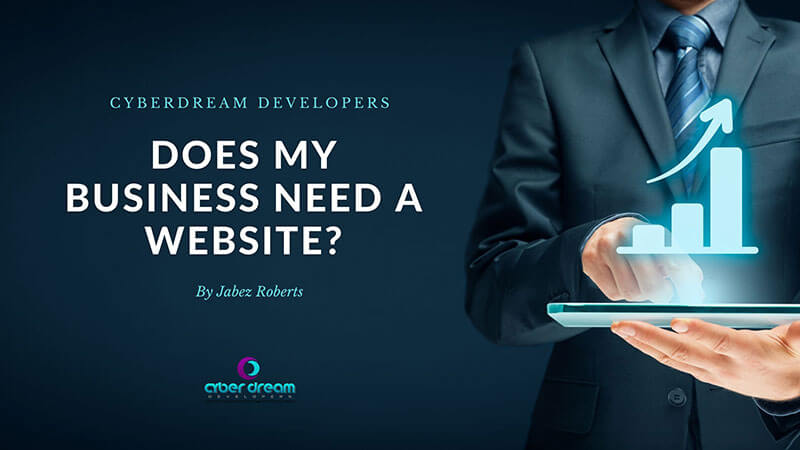
What Is A Buyer Persona?
A buyer persona is a fictional representation of your ideal client or target audience. You can develop effective, targeted content when you have a clear picture of their goals and challenges.
A buyer persona can also help you to decide faster and with more accuracy what is the ideal product or service for your client and how best to serve them.
Buyer personas (a representation of who might be buying) helps us to better visualize who our ideal client is so that we can communicate with them and serve them the best product or service. It also tells us who a ‘qualified lead’ is and who is a ‘good fit for our business.
Let us quickly define these two terms.
Who is a qualified lead?
A qualified lead is any lead that your business earns that is a potential customer. That means that not all leads in your business are ideal customers.
As a quick example, when you sign up for the Lamborghini newsletter you might be doing it because you’re a 16-year-old who loves learning about cars and want to know what’s the newest and most innovative developments in the world of supercars.
That is all good to hear but for Lamborghini, if you are like most 16-year-olds – in high school – you are not a qualified lead, at least not yet.
Not only is your budget not in their ballpark region but you are also not looking to become a customer, not as yet at least.
What Is An Ideal Customer Profile?
A qualified lead is always achieved from an ideal customer profile.
An ideal customer profile is characteristics of a company or the type of person you sell to that helps marketers and sales teams collect leads.
It is bove the sales funnel which means it’s the overall group you look to appeal to and is the largest subset of your target audience.
It helps marketers create messages to speak specifically to audiences in order for companies to capture their attention.
This includes size, location, industry, product/service offering, job title, and market position.
Your customer profile is unlikely to change over time and shapes the basis of the target audience of your sales team.
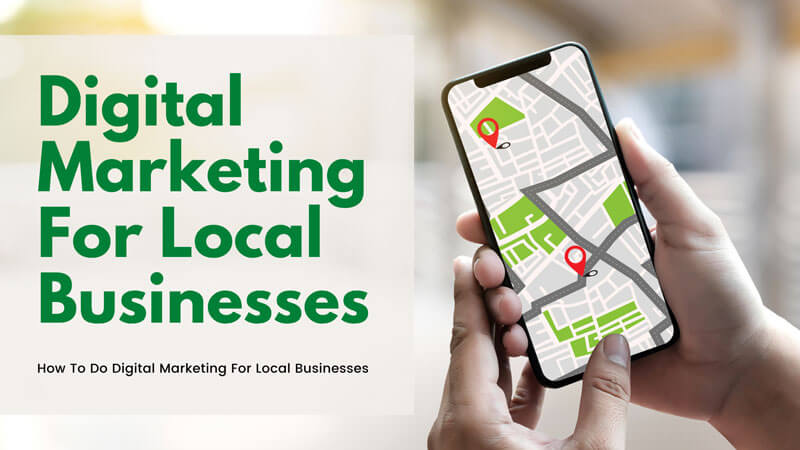
Who Is Considered ‘A Good Fit’ For My Business?
As we learned in the example above of the Lamborghini loving 16-year-old not everyone that enters your sales funnel (will be defined below) as a lead is a good fit for your company.
This is true even though they might meet one of the criteria for your sales team to pursue from your ideal customer profile.
So now we must dig more deeply and look at what it means to be ‘a good fit’ for and who is a good fit or customer fit for your business.
When deciding on a’ good fit’ or ‘customer fit,’ salespeople put effort into trying to find customers that would be likely to turn into success.
This is what defines a customer fit or good fit for your business.
It is a specific set of criteria that helps you define who is likely to be a customer or client and deserves more resources to convert.
It is like your GPS that guides you along the way to ensure you don’ttake a wrong turn off the i-95 and wound up in another state by accident.
A good fit is always achieved by offering a product or service that solves a customer’s problem.
It is the criteria that ensure you don’t spend 3 months and $20,000 in marketing resources trying to convert the 16-year-old who is only trying to learn about supercars while ignoring the 35-year-old company executive that is making $500,000 per year.
You avoid this because it tells you that you good fit must have a budget of over $500,000 and not just be a lover of exotic and supercars.
That one difference can make such a huge difference in the success of your marketing campaigns and the success of your business.
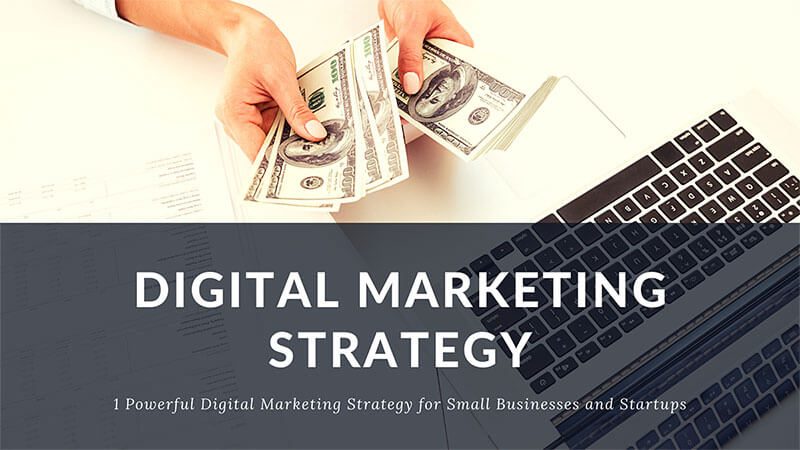
What Is The Difference Between An Ideal Customer Profile And A Good Fit?
The difference can be seen simply as looking at one as a subsection of the other.
An Ideal Customer Profile or Ideal Client represents the total market share or ideal group of people that you would look at to find your good fit.
It is the destination of your interstate travel vacation that your GPS prevented you from getting lost on or the total sub-market of car-loving aficionados to who you will sell you Lamborghinis.
The Good Fit is more specific and detailed.
It is the GPS that yells at you for being in the lane of the interstate highway that will send you cross-country all the way to New York after you deviate from your path to Vegas.
It is the one piece of metric that stops you from investing heavily in trying to convert a 16-year old to a customer of Lamborghini because it shows you that your good fit is usually a 35-year-old c-suite executive male that makes over $500,000 annually.
Awesome when you can avoid losing money in your business, isn’t it?
So What Does This All Have To Do With Lead Generation?
Everything!
It tells you who can be a lead that will drive your revenues and sales up which is good for business or who needs a bit more time to nurture and convert to a client.
Remember we looked at the buyer’s journey above?
Well, that helps here also.
In the buyer’s journey, we have three main stages: Awareness, Consideration, and Decision.
As we have outlined above there are different ways to ideally communicate with prospects at each stage of the buyer’s journey.
In other words, when we identify an ideal client from our pool of customer profiles we must also determine what stage of the buyer’s journey they are.
This will help us to evaluate how easily and quickly we can convert them to a customer or client. Additionally, it tells us how best to serve them.
A prospect in the Awareness Phase needs a lot more education about the problem they have.
They need to learn as much as they can and so an email drip campaign to help them learn more about the problem is recommended.
A prospect who is in the Decision Phase is ready for a hard sell – they want to buy. They are ready to hand over their hard-earned cash!
They only need a little bit of selling, a little bit of nudging, a little bit of positioning to get them into the right frame of mind to make the purchase from you.
In this case, a free consultation or test drive for the Lamborghini mentioned above is in order. Maybe a sales call with your best sales agent is the way to kick off this interaction so you can set the tone for the relationship.
Now we see how all these seemingly minuscule and unimportant features affect the results of our lead generation strategy that we will outline below.
Knowing all this information means it will impact our strategy and results positively.
Ignorance is bliss, or so they say, but not when the life of your business is on the line.
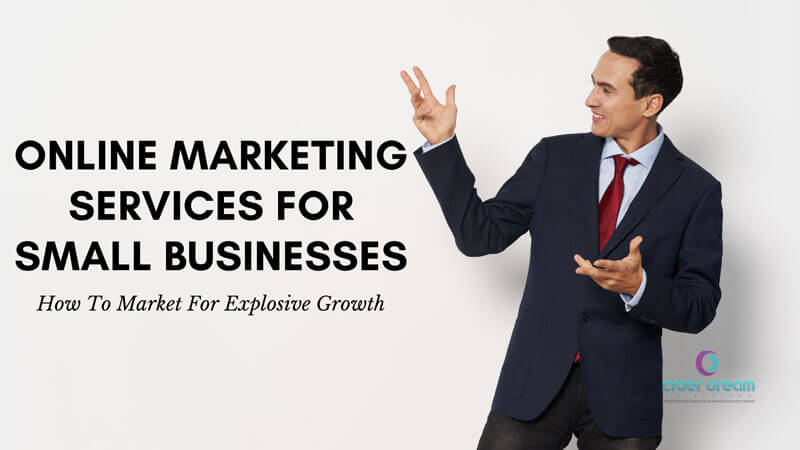
How Do You Identify Your Ideal Client?
Now that we understand the buyer’s journey and how to find the right lead generation opportunities from each state of the buyer’s journey we are going to look a little bit more closely at our ideal client.
When we learn how to identify our ideal client we will also learn a bit more about identifying our ideal customer profiles as well our customer fits or good fits.
Let us now take a look at identifying our ideal clients.
To identify our ideal clients we need to know as much about them as possible beyond the scope of ‘they want to buy my product or service.’
In business when everyone is your customer it turns out that no one is your customer.
In sales parlance, if you try to sell to everybody you will end up selling to nobody.
Some people are going to choose the competition over you – that is ok.
Some people are not going to like your brand or company – that is ok.
Some won’t like the way you do things and the things you sell – that is ok.
That and more is all for two reasons.
Reason 1. The fact that they don’t like something about you makes it easier for you to identify them as not being an ideal client or a good fit.
You will know right off the bat to move on to the next prospect and not to waste a second of your time trying to change their mind.
Sounds harsh?
It’s not. Reject this advice and watch your business lose profits and maybe even go belly up.
So much for being harsh, no?
Reason 2. For every one that identifies themselves as not being an ideal client, you will come closer to learning who isn’t the person you’re trying to sell to and also who you’re trying to sell to.
Identifying these two groups of people is absolutely crucial in lead generation!
You need to know who to pursue as a lead and a potential customer before you even start.
When you go for a drive you always decide where you want to go before you get into the car, turn the ignition and load your favorite Avici or Taylor Swift album.
You don’t decide where to go after driving around aimlessly for a few minutes. This saves you time, money, and a whole lot of frustration.
If you take this efficient approach to a day off in the countryside with the family for a nice picnic and camping why won’t you do the same with your hard-earned money and business that supplies all your needs.
So now we understand why it is important to identify your ideal client right off the bat.
Now let us introduce a 16-question checklist we’ve written in this post to help you quickly identify your ideal client even if you don’t have any marketing experience.
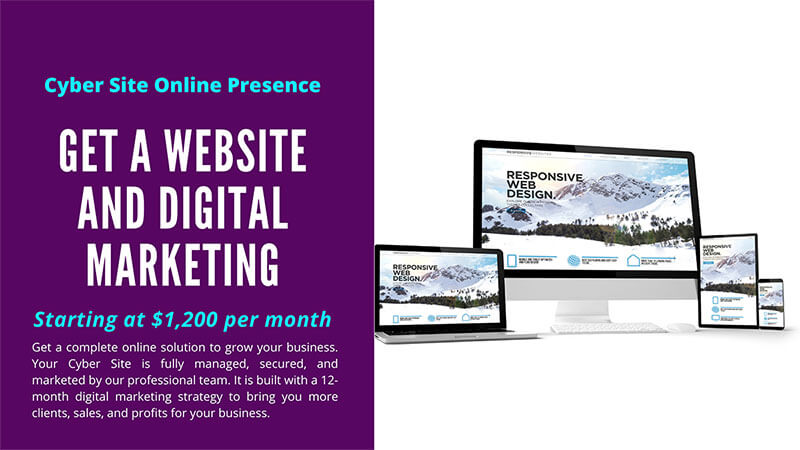
- Who is my ideal client?
- Where does my ideal client hang out online?
- Where is my ideal client offline?
- Is it cheaper to reach them online or offline?
- Is it easier to reach them online or offline?
- Which method can I start right now?
- What problems are my ideal clients facing that I can solve?
- What interests does my ideal client have? What do they care about?
- What fears and worries do my ideal client have?
- What is your ideal client’s demographic?
- Where does your ideal client hang out online, what social media platforms do they use the most and how much time do they spend on them each day?
- Where is your target audience offline in their daily lives: at work, home, school, etc.?
- Am I looking to make money now or later?
- Am I more interested in building a solid brand to last for years or do I want the quick buck?
- How much money do I have to spend on marketing?
- Is my ideal client in my local area or are they international?
You need to learn a lot more about your client like we said above, than just that they might be interested in doing business with you.
To effectively communicate with them you must learn their fears, their worries, the things that keep them up at night.
Learn their dreams, their aspirations, their desires, the things they work so hard to achieve.
These things aren’t always financial.
You might be shocked to learn how many of your clients work hard on their investment portfolios not to get a million dollars but to be able to provide a college education for their children and financially safe and stable retirement for their parents.
It’s not about money at this stage. It’s about relationships.
Knowing these things about your prospect shapes the way you communicate with them.
This shapes the way you build a relationship with them and how you convert them into a customer or lead.
Learn more about identifying your ideal client by reading this article: Powerful Marketing Tips For Small Businesses In 2021: How To Get Explosive Growth

What Is A Lead Generation Cycle?
A lead generation cycle is the process of generating leads for your business.
It can be thought of as an ongoing loop where you first create content, then promote it to generate traffic and conversions.
Then the next time around, instead of creating more content, you’re using that traffic and conversion data to build new offers which will, in turn, bring in even more prospects!
What Are The Four Stages Of The Lead Generation Cyce?
There are 4 main stages of the lead generation cycle with an option for a fifth. These four stages all connect and relate to each other and one naturally progresses to the next.
The interdependence of these stages makes it easy to tweak and improve one step and see an improvement in the performance of the other stage if you keep all other things constant.
The four stages of the lead generation cycle are:
Stage 1. Attraction
This is the stage where strategies like inbound marketing and content marketing are used for the best results as it is strictly the stage where you bring in a list of prospects.
This can be done using inbound marketing strategies to drive traffic to your website, social media, or email opt-in form.
At this stage, there are at least in the awareness stage of the buyer’s journey and are aware of the problem they have.
Your inbound marketing strategy is helping them to learn more about the problem and move them onto the consideration and purchasing phase.
They can also be in the consideration and purchasing phase as your inbound marketing strategy could position you as a solution and viable option to solve their problems.

Recommended article: Outbound Marketing: All You Need To Know 2021 Plus Effective Strategies

Stage 2. Convert
Now that you have the traffic on your website you must do something to convert them into leads.
Most of your website visitors, over 97% actually, will leave your site without doing anything and never return.
Trying to sell to them is a hard fail since they don’t know you and trust you enough to do business with you.
At this stage, you must find a way to convert them without asking for too much.
This is where Gated Content, Content Upgrades, and Email Marketing come into play.
At this stage, you must offer them something of incredible value to convert them into email leads.
This item of incredible value must be something worth paying for, relevant, and helpful to their problems.
Some common lead generating magnets, as they are also called, are ebooks, free consultations, discount codes, free reports, free templates, and guides, free webinars, free courses, etc.
We will provide a list of resources below to help you with converting your website traffic to leads and sales
Stage 3. Nurture
This is the most critical phase of your lead generation cycle.
It is the phase where you build a relationship with your audience and position yourself as a solution to their problem.
In the nurture phase, you will have prospects who could be in all three phases of the buyer’s journey and it will be your responsibility to properly communicate with them.
Two ways you can do this is by using email drip campaigns in a welcome email sequence.
This drip campaign can be designed to provide enough information to move them all to the decision and purchase stages of the buyer’s journey.
Another helpful resource to use is a nurture campaign to build a deep and emotional relationship with your audience.
This improves trust and your understanding of them.
With this added level of knowledge and trust that you have built with them the chances of you offering them a product or service that solves their problems increases massively and the chances of you making a sale when you send them an email also increases greatly.
We will provide a list of resources below to help you with nurturing your leads into clients.
- 3 Effective Sign-up Drip Campaigns for Effective Email Marketing Conversions
- 40 Genius Ways To Increase Your Email Signups
- Email Marketing to Grow Your Business: 15 Powerful Conversion Tips
- Drip Campaign and Nurture Campaign: The Differences in Email Marketing
- 11 Email Marketing Best Practices 2021: How To Write Engaging Emails For Your Business
- How To Supercharge Your Inbound Marketing Results With Email Marketing
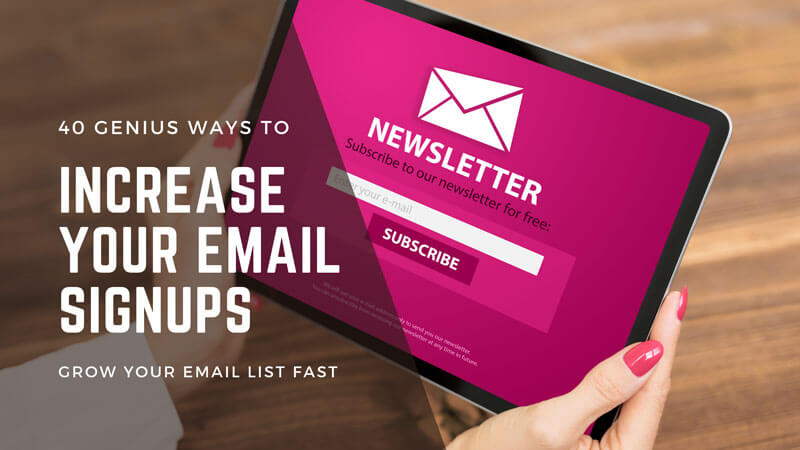
Stage 4. Delight
Now that you have nurtured your audience well, trust is in place, they know all about their problems, and see you as a solution, the next phase is the delight stage.
This is where you make the money and drive new clients and customers into your business. This can be done quite easily and efficiently from email marketing.
In fact, with an ROI of 44:1, meaning you get back an average of $44 for every dollar you invest, I cannot recommend it enough.
It has the highest ROI among all digital marketing media.
We have some amazing strategies to convert more of your email leads and traffic to customers listed below.
- Email Marketing to Grow Your Business: 15 Powerful Conversion Tips
- 10 Helpful Email Marketing Tips For Dentists: Get Explosive Growth For Your Dental Practice
- How To Supercharge Your Inbound Marketing Results With Email Marketing
- How To Supercharge Your Inbound Marketing Results With Email Marketing

Stage 5. Re-Initiate
This is not an official stage of the lead generation life cycle but it’s one that I firmly believe needs to be added.
This stage is where you continue to nurture your audience and build a relationship with them after they have purchased from you.
The aim of your email marketing and nurture campaigns shouldn’t be just to make a sale but should primarily be about building a relationship with your audience.
You should be looking to help them by offering real value at all times.
This desire shouldn’t end the moment you get them to buy from you.
In fact, that’s selfish and a disservice to your valued customers and clients.
Additionally, it is far easier to sell to someone you’ve already sold to than it is to sell to someone new.
There is also no one easier to sell to than someone who just bought from you.
All these reasons combined mean that you should continue to sell to your audience for as long as they are part of it.
We have an article ready that will help you to use this strategy as part of your online marketing strategy to boost sales. You can read that article here.

How Can Leads Grow Your Business?
Leads can grow your business by giving you more opportunities to sell.
It’s easier and cheaper to sell to someone who has already bought from you than it is to find a new customer, so doubling down on leads will help increase revenue over time.
Plus, if they’ve just bought from you then the likelihood of them buying again in the future is high.
In addition to selling to more customers, there is the fact that lead generation allows you to build a relationship with your audience that can create loyal, lifetime fans who trust you and are willing to do business with you at all times.
The revenue attained from lead generation is both immediate and long-term.
An increase in leads will cause a shortsighted boost to your sales figures, but as you continue marketing and generating more leads the growth of your company’s total earnings increases exponentially.
Your ROI on any given campaign can’t be determined until time has passed since that initial investment (or it never will) so tracking results are important for determining how successful certain campaigns have been at growing your business over time.
Generating new customers not only helps bolster today’s profits but also provides an opportunity for future expansion by establishing a customer base who may need other products or services eventually or sometime in the future.
Now you are able to lead them to become lifelong clients with relatively low switching costs when looking for additional goods or services.
An extremely high benefit of lead generation besides being able to build a relationship with your audience is the opportunity it offers to build your brand.
By building your brand it becomes easier to generate leads and sales in the long run because more people will come to you to solve their problems.
They are familiar with the solution you offer so the moment they become problem aware they will look at your solution with warm eyes and an open mind.
A strong brand also has the trust of its industry and is respected as a thought leader.
This makes long-term growth and success of your business easier.
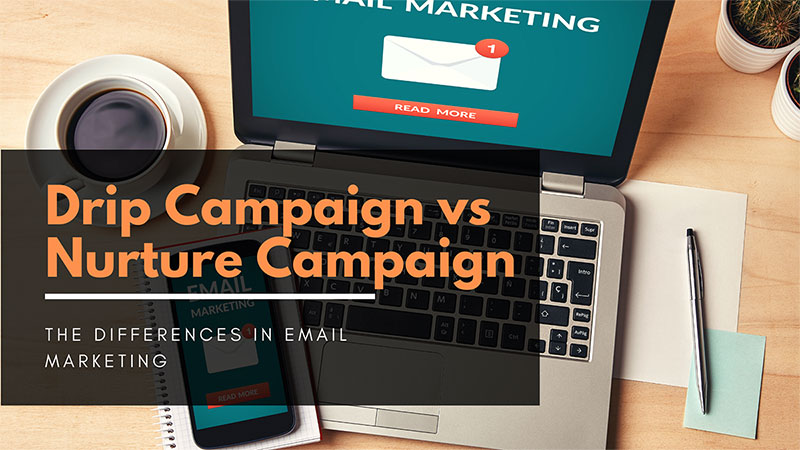
What Are The Benefits Of Lead Generation?
The benefits of lead generation are huge in many different ways.
It’s an effective way to generate leads for your business with a low cost, and it also allows you to accumulate new information about who your customers are which helps provide insight into what they want from the company or product.
Leads can be used as a valuable resource that can help increase sales conversions through customer insights data, market research, and feedback surveys.
Another benefit of lead generation are to be able to identify your target audience and better understand their needs.
This will help you tailor the marketing messages for them, which in turn increases the profitability of your content.
You can also learn more about new technologies that are emerging so as not to fall behind with industry trends.
Lastly, it allows businesses or individuals to grow their email list through quality subscribers rather than those who signed up because they were incentivized by a giveaway or freebie offer.
Once these people sign up on an email list there are easier ways for marketers and business owners to monetize this subscribed audience such as sponsored posts or premium offers.
And to top it all off, lead generation when used in conjunction with a powerful and high-converting email marketing strategy, is the cheapest way to market your business, get sales, and new clients.
If done right you can expect to see a massive return of $44 for every dollar invested on average in your business’s email marketing campaign.
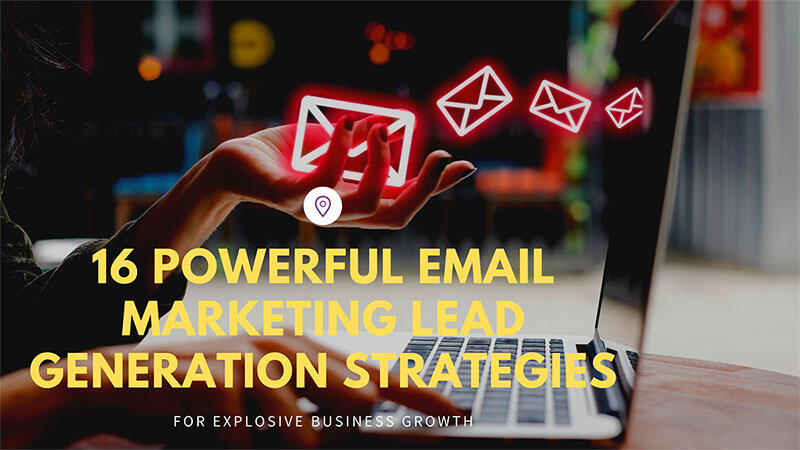
How Can You Make Money With Lead Generation?
Lead generation is a strategy for businesses to create demand and grow their customer base.
Lead generation can be done online or offline, but often it’s used as an internet marketing technique because of the potential reach that comes with digital channels such as social media.
Here are three ways you could make money through lead generation:
Paid Advertising
Some people will go straight into paid advertising without first generating leads in other methods.
It all depends on your budget how much you want to spend and what kind of ROI (return on investment) you’re looking at achieving from each campaign.
You could see success using this method if your target market has good visibility on Facebook ads, Instagram influencers, Google Adwords, etc.
This type of advertising would instantly start generating new leads for your business and allow you to make some quick wins with fast sales and conversions.
You can do this by targeting people who are in the decision stage of their buyer’s journey. We’ve discussed how to tailor your message for this audience already.
Inbound Marketing
The inbound approach to lead generation generally starts with a blog post, email newsletter, or social media content. It might also include an opt-in form on your website’s homepage.
This method is all about providing valuable information that potential leads will find useful and then asking them for their contact details if they want more help from you down the line.
Content Marketing
Content marketing is similar to inbound marketing in that they are both focused on getting traffic to your website for example.
The difference, however, is that inbound marketing is data and result-driven. On the other hand, content marketing is focused on presenting content on as many channels as possible.
Content marketing is helpful in making money with lead generation in that content marketing is focused on stimulating interest in a brand by presenting relevant and helpful information to your list of prospects who could be in any of the buyer’s journey.
This increase in the strength of your brand and the number of leads being generated benefits the business directly and indirectly in the short and long term.

How Do You Attract Leads For Your Business?
There are many ways to attract leads for your business.
This can be done through a variety of marketing strategies.
Some companies will start with creating an inbound lead generation strategy, which involves content creation and digital publishing to attract new prospects online.
Other companies may have the need for professional services now or in the near future; these businesses will want to create outbound lead generation campaigns that reach out to their potential customers via email, phone calls, direct mailings, social media messages, and other methods.
There is no right answer when it comes down to what type of business needs what kind of approach.
In order for any company to generate leads, they must first understand their niche markets and know who are ideal clients would be based on demographic information such as age range, income levels, marital status (single vs married), their fears or desires, etc.
The question of how to attract leads must first begin with asking who is your ideal customer and who do you consider a good fit.
In the article, we linked above with the 16-question checklist for identifying your ideal client we list a few examples of what to consider when trying to attract your clients online.
The fact is that every business’s ideal clients are different and so can be found in different places.
The more you know about them the easier it will be to find, connect with, communicate with, and nurture them.
As a quick and easy-to-digest example; someone who is interested in selling real estate mortgages probably will not find much success marketing on Tik Tok and Instagram.
The audience of these two social media platforms is for a younger generation who, just like our 16-year old Lamborghini enthusiast, isn’t a good fit at this time.
Consequently they will find better success using a platform like LinkedIn and running Google Ads around related search terms to generate traffic to their website.
A content marketing strategy or inbound marketing campaign around the topic is also a good long-term strategy.
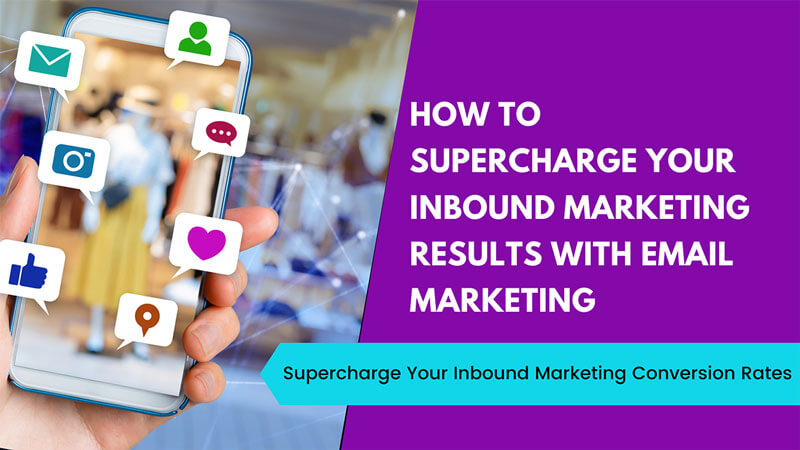
How Do You Get Leads For Your Business?
Leads can be generated in a variety of ways depending on the type and size of your company.
If you’re just starting out, it’s generally good to start with some basic lead generation tactics like networking or online advertising before moving onto more expensive methods such as email marketing or an SEO campaign.
We’ll talk about all these techniques below!
- Networking: This is important for entrepreneurs who want to get their name out there and make connections that might eventually turn into leads. Let’s say you own a frozen yogurt shop – when taking part in community events like festivals, farmers markets, street fairs, etc.
Be sure to bring lots of samples so people are able to try your product firsthand! Offer something from the business that introduces the prospects to your product.
This is why you often see software companies offer free trials to drum up interest in their product. - Online Advertising: This is a great way to find new leads and reach potential customers.
One of the most popular methods of online advertising includes PPC ads like Google Adwords, Facebook Ads, Twitter Ads, or Bing Campaigns.
These allow you to target consumers with specific interests that may be interested in your product, service, or business! - Online Lead Generation: Lead generation can also be done through email marketing campaigns where prospects are targeted via their contact information (i.e., emails).
This method allows for both breadth and depth when it comes to targeting prospective buyers because there is so much more data available about them than simply what they typed into an ad platform while surfing the web. - Traditional Lead Generation Techniques: There are some standard ways of generating leads without spending too much money.
These can involve simple means like driving traffic to an email opt-in form by adding a link to your opt-in form in your email footer, adding a link to your opt-in form on social media posts and social media account descriptions, getting interviewed on other blogs, and offering something of value for free that can be gained through signing up to your email newsletter, or even guest posting on other blogs and linking to your opt-in form there.
Getting leads for your business doesn’t have to be a difficult undertaking and is more art than science at times.
You only need to be creative while understanding the bottom line of the process that is outlined above – get your voice to reach as many people as possible and offer something of extreme value that can teach them more about their problems and solve the problems they face.

How Can I Get Sales Leads For Free For My Business?
To get free sales leads for your business you will still need to pay by heavily investing your time but it’s completely possible to get free sales leads for your business.
There are several ways to get free sales leads.
The most common is through business networking events and conferences that may be hosted in your area.
You can also use social media posts and digital marketing campaigns on various platforms such as Facebook, Twitter, YouTube, etc., which will reach a large number of people who have signed up for these websites or apps.
We may say campaigns but it doesn’t necessarily mean paid.
All it means is that you will need to have a well thought strategy for posting and interacting with your audience.
Another way would be by getting interviewed on other blogs and offering something of value for free that can be gained through signing up to your email newsletter, or even guest posting on other blogs and linking to your opt-in form there.
The idea here is that by using an organic campaign to reach your audience you will eventually be able to generate sales leads for your business.
The underlying truth of lead generation and the buyer’s journey is that you will provide value at all times and your desired result will come after.
We have prepared an article that teaches startup and small business owners how to market their business online. Not only does it include a step-by-step process of how to generate leads that easy to follow but it also explains everything from the first step to the last.
There is a free 24-month marketing strategy included in the post that can be applied to any business to give them massive growth and stability over the next 2 years.
Even with a limited budget, this marketing plan can be implemented.
Learn more by reading the article at: https://blog.zeilhan.com/8-best-online-marketing-services-for-small-businesses-how-to-market-for-explosive-growth/

What Is B2B Lead Generation?
Lead generation for Busines-to-Business type companies is only a little different than lead gen for Businesses To Consumer type companies.
The reason being that your target audience consists of business owners and executives who get bombarded with sales calls all day long from people like you trying to make the big sale.
So, how can you still generate leads as an IT Consultant, Financial Auditor, Website Developer, or any other B2B business or employee?
How do you cut through the noise?
The answer is by providing value!
It’s not enough anymore just to be able to say “we’ve got this.” Your prospects want more information on why they should work with you over another company.
They need reassurance about their decision before handing off their valuable contact lists – or worse yet, cash!
Why would they give up such a large portion of their resources for someone who hasn’t helped them?
At any point in time, they are confident in their ability to help your business with their patronage, and this is especially true for startups looking to win a big client, and will want to be provided with fair value in return for using your business.
Just getting a recommendation for one of these executives can be game-changer for your business at times!

B2B lead generation is best done by using social media like LinkedIn that connects you directly with these company executives.
Additionally, you will need to include a strong, high-converting email marketing campaign that will nurture and build a deep relationship with these executives.
Adding a drip and nurture campaign to this strategy as well as a sales funnel are all powerful ways to put together a lead b2b lead generation strategy that will profit your business.
Does this sound like a lot of work and too much trouble?
Then reach out to our team and we will handle all the heavy lifting for you.
If you want to continue then follow the resources listed below to learn how to set up your very own high-converting B2B lead generation strategy today.
The resources are:
- Is Email Marketing Dead In 2021?
- How To Supercharge Your Inbound Marketing Results With Email Marketing
- 16 Powerful Email Marketing Lead Generation Strategies
- 10 Helpful Email Marketing Tips For Dentists: Get Explosive Growth For Your Dental Practice
- 22 Powerful Email Marketing Benefits To Grow Your Business

What Is B2C Lead Generation?
Business to Consumer lead generation is the process of generating sales leads that come from potential customers.
This type of marketing often involves advertising and other methods which are designed to attract consumers who might need a product or service they offer.
The goal with B2C lead generation is for these prospects to become full-blown buyers, making their first purchase at your company.
A few examples of B2C Lead Generation may be:
An electrician offering discounts on services if you sign up for an annual contract; A restaurant running coupons in local newspapers appealing for new patrons; An insurance agent promoting various policies through direct mailings, digital ads, social media campaigns, and more.
As you can see from these examples there is not much of a difference between what you doing B2B and B2C lead generation.
In fact, at the core, they are the same! It’s just the entity you engage with and give value to is different. Even though the entity is different, at the core they are all humans and will respond like humans normally do.
This means knowing your ideal client is helpful.
They all revolve around providing value to your prospects, educating them about the problems they are faced with, and positioning your business as a problem solver that can help them.
The way to do this is by offering value at every turn and educating your prospect in a way that moves them through the buyer’s journey.
As the client or customer is different what will be different is the way you communicate with your prospect and the items they find as being extremely valuable.
Your strategy changes a bit considering these two factors but the core of the strategy remains the same: provide high-quality, valuable, and helpful information and resources, build a relationship while educating, and then convert and reconvert.
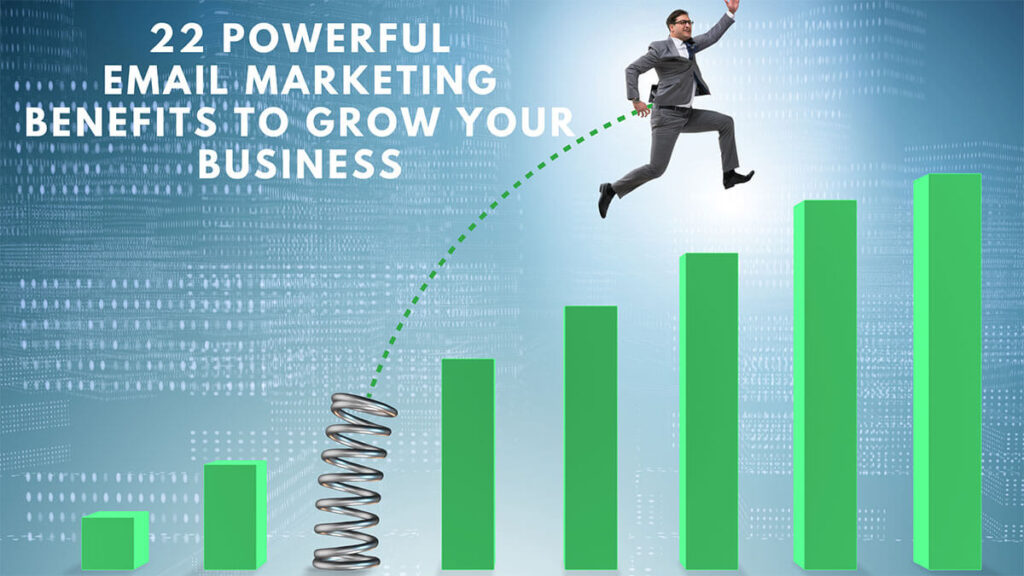
How Do You Do Lead Generation Effectively In 2021 And Beyond?
To do lead generation effectively in 2021 and any time after, your focus should be on educating and providing value to the prospect.
Lead Generation has been a topic of interest for many businesses since it can help them grow their customer base with potential buyers.
It is important when doing digital marketing that you have a strong understanding of what exactly leads are in relation to digital marketing as well as some different strategies that may work best depending on who your business is targeting and what industry they are in.
We have already discussed many of these terms and how they relate to an effective lead generation strategy above so for now we will continue into discussing the most effective lead generation strategy for 2021 and beyond.
Leads come from any interaction someone might have with your company or brand online – whether this includes visiting your website, reading an article about one of our services, or following us on social media.
A lead becomes qualified if there’s enough evidence which points towards them being interested in your service and being a good fit.
Do not worry though!
A lead that isn’t a good fit now can be nurtured into being a good fit but they must match your ideal customer profile as we discussed in the previous sections.
In this section, we will be focusing on the best lead generation strategy for startups in 2021 and beyond.
As you know, there are plenty of different marketing strategies out there which include PPC advertising (pay-per-click), SEO rankings, social media engagement, etc but these tactics can only achieve limited success if they don’t have a big enough budget to back them up.
What’s more, is that it costs much less money to produce leads through targeted content than any other form of digital marketing such as banner ads or sponsored posts.
We are going to outline a simple strategy below that can be used to generate leads effectively for any kind of business.
Then, we will do some applications of the same process in different types of businesses to help you understand how to attract new clients and customers to your business regardless of your budget.
To keep things simple we are going to make it no more than 5 steps, be low-budget with options to add in a paid advertisement, and allow you to accelerate the speed at which you see results at every step.
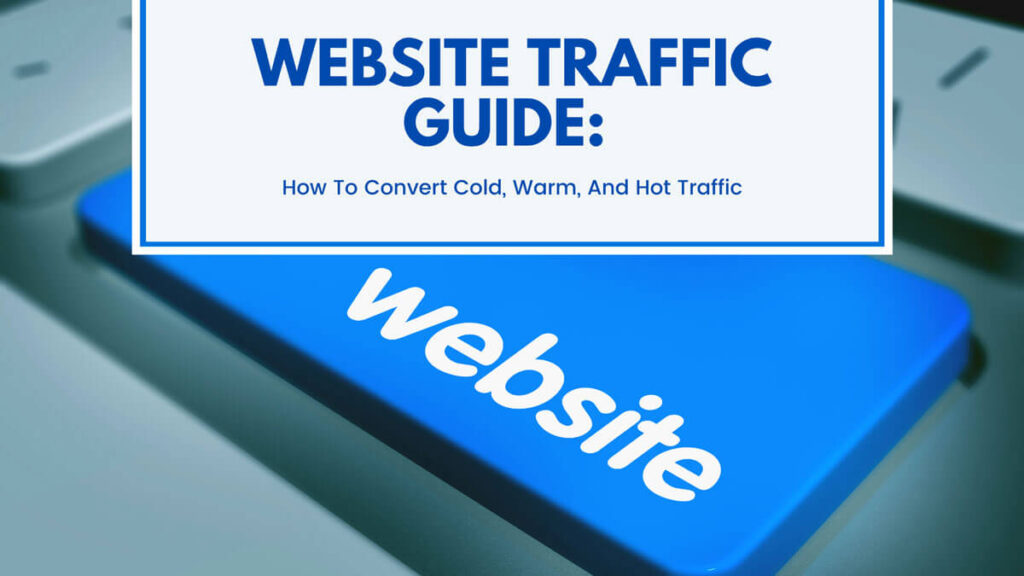
Let us get started.
Step 1. Identify Your Ideal Client
Before you can do anything at all you must begin at ground zero. Strong houses are built on solid foundations and we’ll do the same with your lead generation strategy.
As we discussed in the previous sections everything we do to generate leads for our business will be built on identifying our ideal client.
There is a 16-question checklist that we must complete to identify our ideal client.
Additionally, we must also learn where they are online and understand how best to communicate with them.
Step 2. Attract Them
In this phase, we focus on attracting your ideal client and converting them to email leads.
We choose email because you can get started for free and still have an extremely high ROI of $44 for every $1 invested into your campaigns.
This is the phase where strategies like inbound marketing, social media marketing, and content marketing come into play.
We may also make use of video and podcasts. The idea here is that we must infiltrate the location of our audience.
We prefer to use online because it is easier to scale and reach a wider audience even for local service businesses like restaurants and medical practices.
You can infiltrate offline as well using offline marketing strategies. We discuss some offline marketing strategies in this article.
After we have infiltrated the location of our ideal client and have started communicates with our ideal client the next step is to offer massive value and an incentive to leave and join our email list to get that massive value.
The item of value, as you learned in the section above, is in the form of gated content and content upgrades.
This is the additional reward they get for joining our newsletter.
Phase 2 complete!
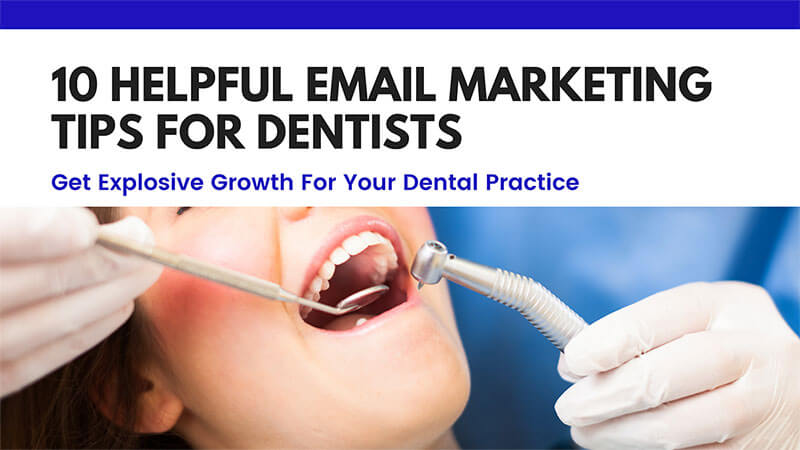
Step 3.Build A Relationship
In step 3 we want to focus on building a relationship with our target audience via email marketing.
We will do this by making use of the best email marketing practices to get our emails opened, using drip campaigns and welcome email sequences to boost open rates and conversions, and nurture campaigns to build an even better relationship with our subscribers.
At this stage, our main goal is to offer value, interact with subscribers, and help them learn more about their problems and solve them.
We do this by offering relevant, timely, and helpful information in a well-thought-out strategy that will provide our subscribers with all the knowledge they need to solve their problems.
This might sound crazy – teaching them to do our jobs – but it’s really not.
They don’t have the time to do the work you do and if they could learn it all from an email subscription then your job needs a change.
By doing this they will learn all they can learn about their problem from you and when that happens they will trust you with their hard-earned cash to solve the problem.
At this stage of the relationship, you remain top-of-mind or first on the list to solve their problems because they consider you a relevant and trusted expert in the field.
You’ve shown them how you can help them.
Step 4. Time To Convert
This is the stage we’ve all been waiting for – sending out emails with a link to our product or service and getting money in return.
Converting email subscribers to customers can be done immediately after subscription or even three emails after signup.
We have prepared a 3-email drip sequence that shows you how this is done.
It also shows you how to make more money per subscriber, up to 10x or 20x more money depending on your business model and the product/service offering you have.
We won’t speak too much on conversion here since it can be as simple as sending out an email with a link to your products or to set up a consultation with you.
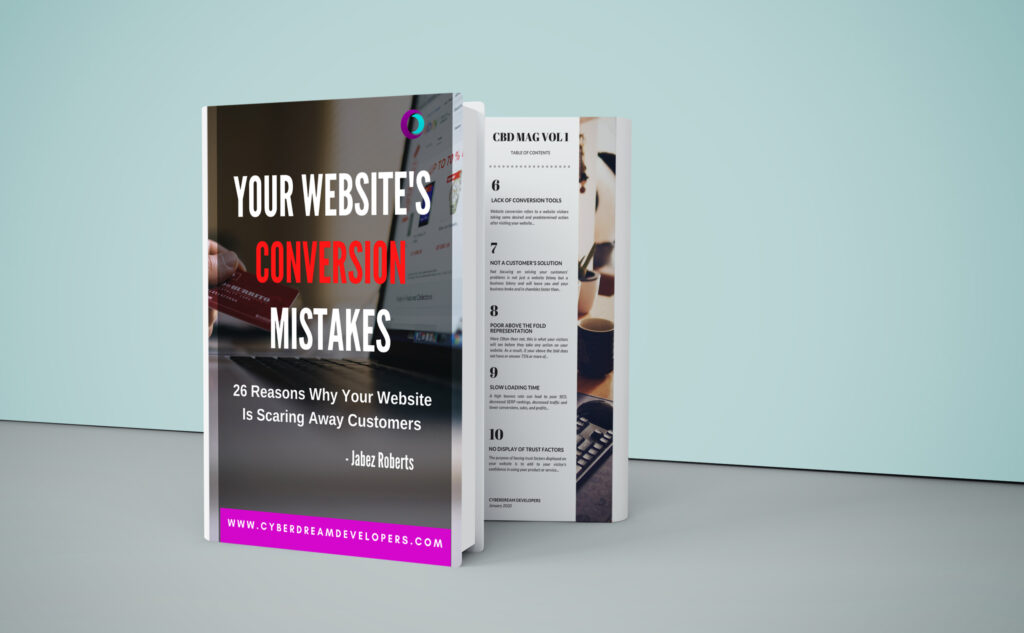
Step 5. Reconvert And Continue Nurturing
As we have discussed above when we discussed the lead generation cycle we do not, and should not, stop at making the sale.
Instead, we should continue to nurture our subscribers, continue offering value, and continue selling to our audience.
Someone we’ve sold to already is easier to sell to than someone who’s never bought from us.
There is no one easier to sell to than someone who has just bought.
Use these two golden rules to your advantage and start selling more.
What Is a Sales Funnel?
A sales funnel is a powerful, three-step strategy that will help you generate leads and close more deals.
It starts with the conversion process where potential customers become prospects.
The next step in your lead generation journey is to nurture these prospects until they are ready to convert into buyers or subscribers for your product or service.
The final stage of this process includes finding new people who have never heard about your company before so they can be converted later on down the line as well!
Sales funnels are popular in the world today and help your business to grow and be more profitable by offering, at each stage of the sales cycle, more value that will help solve your buyer’s problems, sell more of your products to those who are interested, and generously increase your average revenues per customer.
We have prepared this article to help you learn more about sales funnels.
We are also going to link a helpful video below to help you learn more about sales funnels.
How Can A Sales Funnel Grow Your Business?
Since we have already mentioned the topic of this blog post, it is time to start talking about what a sales funnel can do for your business.
Sales funnels are important because they allow you to measure and improve conversion rates over time by analyzing how many people enter at each stage and follow through with a purchase or lead generation request during that stage before going back up the ladder again.
This helps businesses figure out where their strengths and weaknesses might be in order to better serve customers down the line.
We have prepared an example in this article of a sales funnel at work in a business marketing strategy.
We break down all the numbers and steps to make it clearer to you what is happening at each step.
We’ve also given an explanation on how you can integrate this sales system into your business to start earning more.
Learn more about sales funnels in this post: 1 Powerful Digital Marketing Strategy for Small Businesses and Startups

How Can You Get A Sales Funnel For Your Business?
It is very easy to get a Sales Funnel for your business.
The first way is that you can hire our team of professionals at CyberDream Developers to not only get your business a sales funnel but also optimize it and your digital marketing campaigns to get you the best results and best ROI possible.
The second way is that if you have a WordPress website you can get an easy-to-use sales plugin called Cartflows. You can sign up here.
The last way to get a sales funnel for your business is by using popular sales funnel software Clickfunnels to grow your business. You can get an account here.
Personally, I believe all these three options are helpful and have their advantages and disadvantages.
If you want quick results then hire a professional who knows their stuff.
If you want to learn and aren’t tech-savvy then Click funnels and a WordPress website will be helpful.
If you want to be among the big dogs and aren’t afraid of a challenge then embrace the Clickfunnels way of Funnel building.
The ball is in your court. Choose the best option for your current situation. They all have the ability to offer the same result.
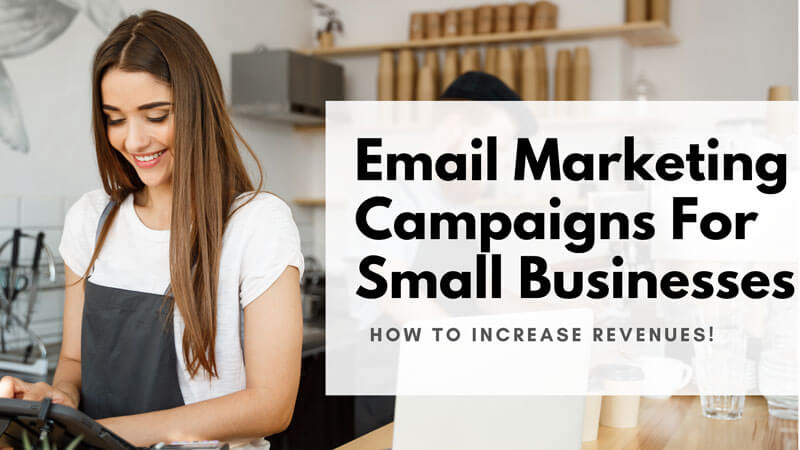
What Is A Lead Generation Sales Funnel?
A lead generation sales funnel is a system that helps generate leads from potential customers.
This system involves marketing, advertising, and selling products to get as many people on the website as possible.
After they have visited the site once or more times it becomes easier for marketers to persuade them into signing up for their emails or buying one of their products.
Lead Generation is an excellent way in which companies can find new clients without spending too much money in terms of advertisement costs.
Once you’ve created your lead gen campaign, you need to make sure it’s optimized with SEO keywords so people will be able to find it when searching online; this is also called search engine optimization (SEO).
You may want to consult with someone who has experience doing SEO work and conversion optimization.
It can also be helpful to hire a copywriter to help you craft your message to communicate best with your audience.
In the next section, we are going to look at how to use all that we have learned in a simple strategy to generate leads for different types of businesses.
Recommended article: Search Engine Marketing: All You Need To Know In 2021 And A Powerful Strategy
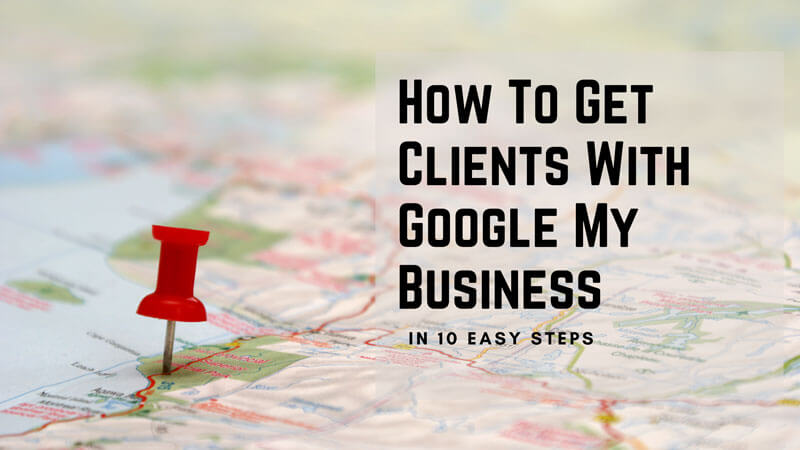
How Do You Generate Real Estate Leads?
Step 1. Identify Your Ideal Client
We will assume for this example that our ideal clients are freshman university students.
The reasoning here is that we have a few flats near a popular state university and we’re looking to rent this space to newly enrolled college students.
The reason we’ve decided to rent to newly enrolled college students is to avoid having to find new tenants too soon and they would be most likely to spend multiple years at the flats we have up for sale.
Our ideal clients are university freshmen for the nearby state university.
They are aged 18 to 19 and are enrolled in a 4-year degree. They aren’t looking to stay on campus but their parents are still concerned about their safety and where they will stay.
With their kids being far from home they would like them to have a comfortable and safe place to stay above all else and a point of reference in case of emergencies.
The parents of these kids are middle-income families making a combined $100,000 per year in salary and are deeply invested in the success of their children.
A pretty simple and open client description.
Step 2. Attract Them
To attract our clients there are a few things we are going to do:
- Run Facebook Ads to current 18 to 19-year-olds that have visited the university especially during the orientation period.
There are ways to target this audience in Facebook Ads so we won’t go into too much detail here. - Connect with the university’s student council, Dean, and other key staff members that are responsible for building student relations and getting new students acclimated to the university culture.
We will do this to become a safe and trusted point of reference with the university in some way. - Advertise using PPC ads on google.
We will use words in our ad copy to convey the image of a safe and peaceful environment with the added bonus of having a close relationship with key university staff. - We will create content geared at getting freshmen acclimated to the university.
This can be blog posts and videos about university culture, cool shopping places nearby, and what to do in case of a medical emergency while at the university. - Post and repost our content to multiple social media channels where these freshmen will be. i.e Instagram, YouTube, Tik Tok, Clubhouse, Facebook.
- Try to get into the University’s newsletter as a trusted place to stay for students who opt not to stay on campus
Step 3. Build A Relationship
Building a relationship has already been discussed in points 4 and 5 of step 2.
For this step, we would double down on sharing this content across social media channels and getting active in our engagement with comments and responses.
A weekly email newsletter would be in order because I’m a firm believer of email even with the younger generation.
This would be done differently than with a more mature audience. Keep it light, funny, and packed with entertainment.
Center it around enjoying college and having an amazing college experience, not only on real estate.
The idea is to provide value to your audience and once they are tenants you need to find a way to keep them involved.
You do this by providing information to help them enjoy the new city they are in – events, chill spots, fun facts, university hacks, emergency contacts, etc.
Give it all to them and when they need something they will ask you.
This allows you to do more than rent Real Estate because now you can offer summer job opportunities, living spaces in different locations, and recommend spring break activities for a nice little commission.
Get 1 more Real Estate Lead Generation Strategy here.
Step 4. Time To Convert
Conversion, at this stage, is more about logically convincing the parent that the space is right and you will do this by a guided tour and speaking their language.
All this time you’ve been selling to the children because they have a massive say in where they stay.
As budding adults that are mature and responsible, they must be able to recommend a place to their parents for them to stay and you do this by appealing to their emotional side – the sense of excitement and thrill of going off to college- while addressing the logical side – safety features, amenities, a person to rely on in emergency situations,
You would’ve been providing all this during the attract and nurture phase.
Now when it is time to convert there isn’t much selling to do than to convince the parents that you have their child’s best interest at heart (and you should!).
Show them the safety features, your relationship with the university, your resourcefulness, your experience living there (a huge plus).
Help them understand that you know how they (if you have children) must feel and how important all these features you offer are for college students and parents (if you’ve been to college this helps).
Step 5. Reconvert
Reconversion is easy.
Both the parents and children know you, love you, and trust you. They may even know you for years before they look to contact you again.
This time they may be selling their home or the kids might be looking for a place in another city.
This reconversion might take years but it will be worth it. After all, these relationships have been built to last a lifetime.

How Do You Do Lead Generation For Technology Companies?
Step 1. Identify Your Ideal Client
We will assume that our company sells computer networking solutions to other businesses.
In this example, our ideal client is a business that is facing the issue of manually keeping track of their records, connecting all their computer systems to a common network to allow for faster transfer and processing of data, and are looking to have a managed solution for their business.
They need a database setup that increases their storage capacity, increases their system security, is fully manageable and scalable, and increases the speed and availability of data across several physical locations across the city
Yet again we use a very simple customer profile to get started with.
Step 2. Attract Them
During the attraction phase, we must find out where our ideal client is, what problems they face, the best result that would solve their problems, and how to communicate with them.
We know that we can find these companies through a google search but that would be too tedious. Reaching out to company execs on LinkedIn organically is also not optimal since not all companies we can help are looking for a solution and that’s the answer to this dilemma – who is looking for a solution and where do they look?
We already know who is looking for a solution from the 16-point questionnaire we did for this section. We also know where they are looking:
- On Google for answers to questions, tutorials to fix glitches in the current system, and possible companies that solve these problems while they learn more about the issues
- YouTube – To learn more about networks and fixes for the common problems they have
We attract them by using these media to create high-quality relevant and helpful content that will help them to learn more about their problem. It should be solution-based and be void of jargon and technical talk.
Make it as easy as possible to understand.
Blog posts with copious amounts of pictures and video content on YouTube are helpful. Embedding your YouTUbe videos into your blog post is also a plus.
Search Engine Optimization must also be used in this inbound marketing strategy to improve search visibility. DOn’t ignore Google My Business and Local SEO either as this can bring in a plethora of traffic to your business.

Step 3. Build A Relationship
We won’t discuss too much about building a relationship since we already touched on that in the previous step.
We will add to that by including email newsletters with a free eBook or online course on a common problem our target audience might be faced with
Step 4. Time To Convert
We will try to convert our audience at the end of a 3-email welcome email drip sequence. We do this to facilitate those who are in buy-mode now.
We will also make use of nurture campaigns, and exclusive and additional content that can inch them closer to a solution for their problems.
Keep the emails short and value-packed. No more than 3 emails per week to this audience.
Most people with this issue are more interested in hiring to solve the problem than learning to solve the problem.
Knowing this means the main goal of our email marketing campaigns is to build a relationship and try to convert to a consultation at least 50% of the time.
Step 5. Reconvert
Reconversion in this type of business is also easy. The idea is that there are many complementary products and services that this audience can benefit from.
the first sale should always be the door to offering more value and solutions to your audience.

How Do You Generate Leads For A Startup Or Small Business?
Step 1. Identify Your Ideal Client
We will use a very simple example for our small business – a local coffee and pastry shop. Selling ice cream, baked pastry such as cakes and doughnuts, coffee, and smoothies.
Our ideal client are children and adults with a family living in our local area.
Our gluten free offering and vegan options gives us the advantage over all our current competitors.
We will use this simple profile to identify the ideal customer of our eatery.
Step 2. Attract Them
Attracting our clients is going to be easy but will need a bit of strategy to ensure it works. Let’s break it down.
The easy part is where to advertise and how: we will post pictures and videos to Instagram. It is picture based and people eat with their eyes before they use their mouths. We will cross-post our media to Facebook also.
We need to ensure that our audience stays local and this is where we need a bit of strategy. The strategy would look like this:
- Post to instagram and facebook using local hashtags
- Run Facebook ads to grow our Facebook following by tareting people living in a 2, 5, or even 10 mile radius of our store
- Add a signup form to our facebook and instagram pages and posts to convert leads
This ensures our posts get shown to the right audience.
The next thing we will do is to set up Google My Business and post pictures of our best food there.
We will also ensure that our location on Google My Business is added to Google maps.
Attraction complete!
Step 3. Build A Relationship
Building a relationship will take place in email and social media but email will be our primary focus. For this reason, we will post specials and discounts in email but notify social media followers of their availability as an incentive to join our email list.
Our emails are short and light-hearted. No one wants the tone of a business meeting when daydreaming about your chocolate parfait and brioche. Allow them to dream.
An email or two a week keeps the cafe full and the kids smiling.
There is no need to reach out every day but ensure that you provide value. Tell them about specials, upcoming events, and new listings.
Step 4. Time To Convert
Conversion is an every email situation. It is safe to assume that someone who has ready your email loves your product and wants it at that moment. Give them a reason to come in and make it easy by including pictures and an online order form.
At this stage they open your emails with high-intetn to convert.
Step 5. Reconvert
REconversion takes place every day. There is always a reason to revisit so why stop at the first conversion. Keep the emails and specials coming and ensure that your audience feels your love by replying to comments, sharing pictures of happy customers, and sharing staff news like employee of the month and special of the week.
It’s a small eatery but the advantage is that everyone gets treated like family. Endeavor to treat them that way

How Do You Generate Leads For Larger Companies?
Step 1. Identify Your Ideal Client
Larger companies will have a different approach and we’ll be sure to add it here.
We will assume that you are a local fortune 500 or blue-chip company that offers life insurance.
Your ideal client is anyone over the age of 25 really. We all die, right?
We will add that they fear not having enough money for their kids to live off if they die young and also worry that when they grow old they won’t have enough to take care of medical expenses.
As such, they would like to start getting some kind of payout at the age of retirement and if they die before retirement they would like to have monthly payments be made to their kids for a set period of time or an amount.
Your task is to find more of these ideal clients and sign them up – 10,000 in the next quarter in fact.
So let’s get started!
Step 2. Attract Them
In order to attract them, we must first know where to find them, learn their fears and desires, and talk to them in terms of their language.
For this example we will focus on finding our audience where they are – at work.
We won’t look in any of the other numerous places they could be like hospitals, doctors offices, or pharmacies.
We will start by partnering with businesses and companies that have a staff of 5 or more people. Self-employed people and small businesses will be at the very top of our list because this is where the fear is greatest.
WE offer them a solution to an unstable and uncertain financial future for themselves and their kids.
To really nail it, and make the best of our marketing budget, we will hire a professional copywriter to craft all our messages and marketing material including social media posts, emails, and other offline marketing material like flyers and business cards.
We will reach out by cold calls, cold emails, Google PPC Ads, LinkedIn Ads, and buy buying advertisement space on local health-related websites. SEO would be an option but not an immediate priority due to the popularity of the business.
A content marketing strategy based on blog posts and youtube videos could also be used to educate our audience on any potential issues they might face.
Lastly, Google My Business will be important in our local online visibility.

Step 3. Build A Relationship
We will be using a professional copywriter to craft all our emails. Emails centered on comforting our subscribers and helping them know they are in good hands.
As a large company with a large marketing budget, we will hire staff to reply to as many emails and social media engagement every day.
We will also use drip and nurture campaigns to deepen the connection with our audience.
If there is a health scare like COVID-19 we will ensure they are properly prepared an educated.
We will do everything in our power to build up a confidence an trust in our audience.
Step 4. Time To Convert
When it’s time to convert we wil go for a call with an agent.
This might be done by booking a consultation on our website but that’s about the only non-human contact we will have.
Everything must be done in a way to ensure that our audience has a human and personal relationship at all stages.
They need this support and comfort now when things are good before they grow older and start to worry about these things. We are building a relationship for generations and must think of it as such.
Step 5. Reconvert
Like we said we are building a relationship for generations we will ensure that our reconversion is centered on building a relationship and offering value for two lifetimes, at least!
Trust goes a far way and so we ensure that we are helping them achieve peace of mind and financial freedom along the way.
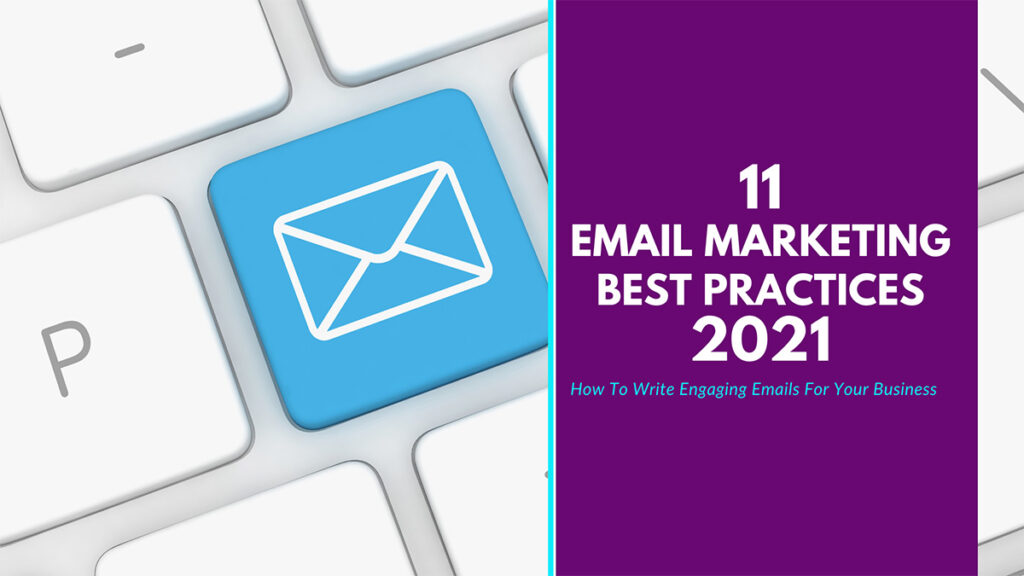
How Do You Generate Leads For I.T Companies?
Step 1. Identify Your Ideal Client
We will assume that the I.T company in question here is a website development company that offers website development services for small and medium-sized businesses.
The ideal client is an entrepreneur or business owner who knows the importance of having a website but doesn’t know how to create one and would prefer to leave the tech stuff to a more tech-savvy person. They have a thriving business and now are ready to make the step into the online world by hiring a professional to set up a wonderful website for them.
Sounds a lot like one of our customer profiles at CyberDream Developers.
Let us continue!
Step 2. Attract Them
Attracting this type of client can be done in many ways but we will settle on asking who they are and what do they need. We’ve already defined that above but there is more information to learn.
We now ask where do they go online to find a solution for this problem and we come up with a few answers:
- Online forums for business owners
- Google searches for the best in the area
- Word of mouth from other business owners with an awesome website
To attract them we will rely primarily on SEO to build up our search visibility. we will also focus on local SEO and Google My Business.
We will also get active in online entrepreneur groups, forums, and discussions and offer helpful and insightful information to questions asked by members.
Lastly, a simple google ads PPC campaign will get us a the top of google with an offer they can’t resist – a guide on how to make money for your business with a website
Step 3. Build A Relationship
As we convert most of these leads to email subscribers we will build a relationship by focusing on content that will offer information on how to get a website to grow its business.
Their fear is that they will miss out on online traffic and market and they need to understand how a website will alleviate this fear.
Additionally, they want to know that you can be the person to solve this problem and alleviate this feat they have,
Step 4. Time To Convert
Conversion is usually in the form of a free consultation. This is where you offer to show them possible solutions that could work for their business.
We don’t need to reinvent the wheel so we’ll continue with that.
Additioanlly, we will shar ecase studies and testimonials with them and include contact information of past clients – word of mouth i simprotant, remember.
Step 5. Reconvert
When it’s time to reconvert we educate them on how to make money from their website and offer complementary services like SEO and website maintenance to name a few.
Conclusion – Lead Generation Complete Guide: From Basic To 5 Powerful Strategies
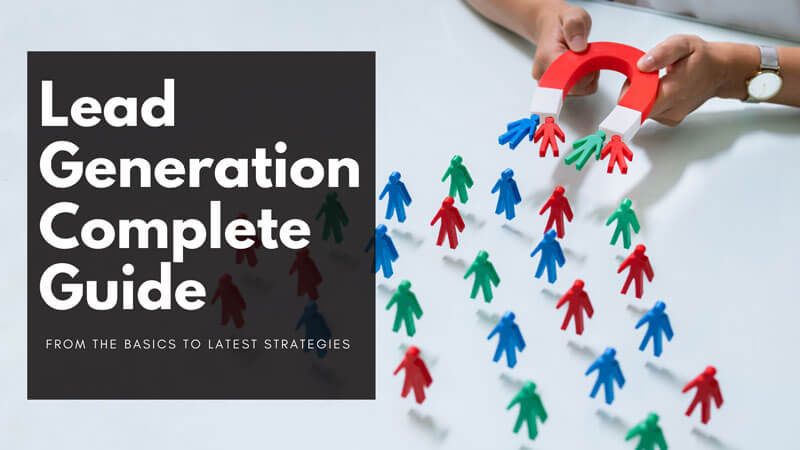
In this post, we have looked at lead generation in great detail.
We now have a complete and working understanding of lead generation not only for our business but also for many other types of businesses that are around us.
We know how to generate leads for our business, nurture them and convert them to sales and clients.
More importantly, we know how to identify our ideal clients and communicate with them, and build a relationship with them by bringing value that can’t be found elsewhere.
We hope you’ve found this article helpful.
If you have any questions pleas leave then in the comment section below.
If you need help with any section of this article or even the complete process for your business and would like to leave it to a professional then our team is waiting to help you start generating leads for your business today.
Setup a free consultation here.

